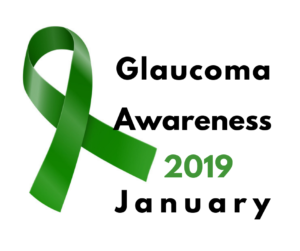Glaucoma Awareness Month


Glaucoma
Glaucoma is a condition in which the fluid pressure in the eye is so high that it obstructs and damages the blood vessels and/or fibers in the optic nerve.
Open-angle glaucoma is the most common type. In open-angle glaucoma the aqueous humor, which is the fluid in the front compartment of the eye between the lens and the cornea, becomes blocked and causes a build-up of pressure in the eye. This type of glaucoma develops slowly.
In acute closed-angle glaucoma there is a sudden obstruction to the outflow of the aqueous humor and eye pressure rises quickly. The symptoms of acute closed-angle glaucoma are severe eye pain, nausea and vomiting, blurred vision and halos around lights. This type of glaucoma is a medical emergency and if your doctor is not available go to the nearest hospital.
Glaucoma can also be caused by an eye injury.
Congenital glaucoma is caused by an abnormality in the drainage angles of the eyes that is present at birth.
Risk Factors
The following are risk factors for developing glaucoma:
- over age 60
- have a family member who had glaucoma
- are of African, Hispanic, or Asian heritage
- long-term steroid medication use
- have diabetes, migraines, or high blood pressure.
- have had an eye injury
Diagnosing Glaucoma
Your doctor will dilate your eyes to conduct a comprehensive eye exam and use a device designed to measure the pressure in your eyes and an ophthalmoscope to examine your optic nerves. There are also advanced imaging systems that your doctor can use to assess the health of your optic nerve and other eye structures.
Treatment Options
When glaucoma is diagnosed early there are treatments that can reduce the intraocular pressure and prevent damage to your optic nerve. Several types of prescription eye drops are available that reduce eye pressure. If eye drops don’t lower your eye pressure enough, there are oral medications that your doctor can prescribe. Other treatments include laser therapy, drainage tubes, filtering surgery, and minimally invasive glaucoma surgery.
Early Detection
Early detection and treatment of glaucoma can prevent serious vision loss. Have a comprehensive eye exam at least every two years and encourage friends and family members who may be at high risk of developing glaucoma to have comprehensive eye exams.


